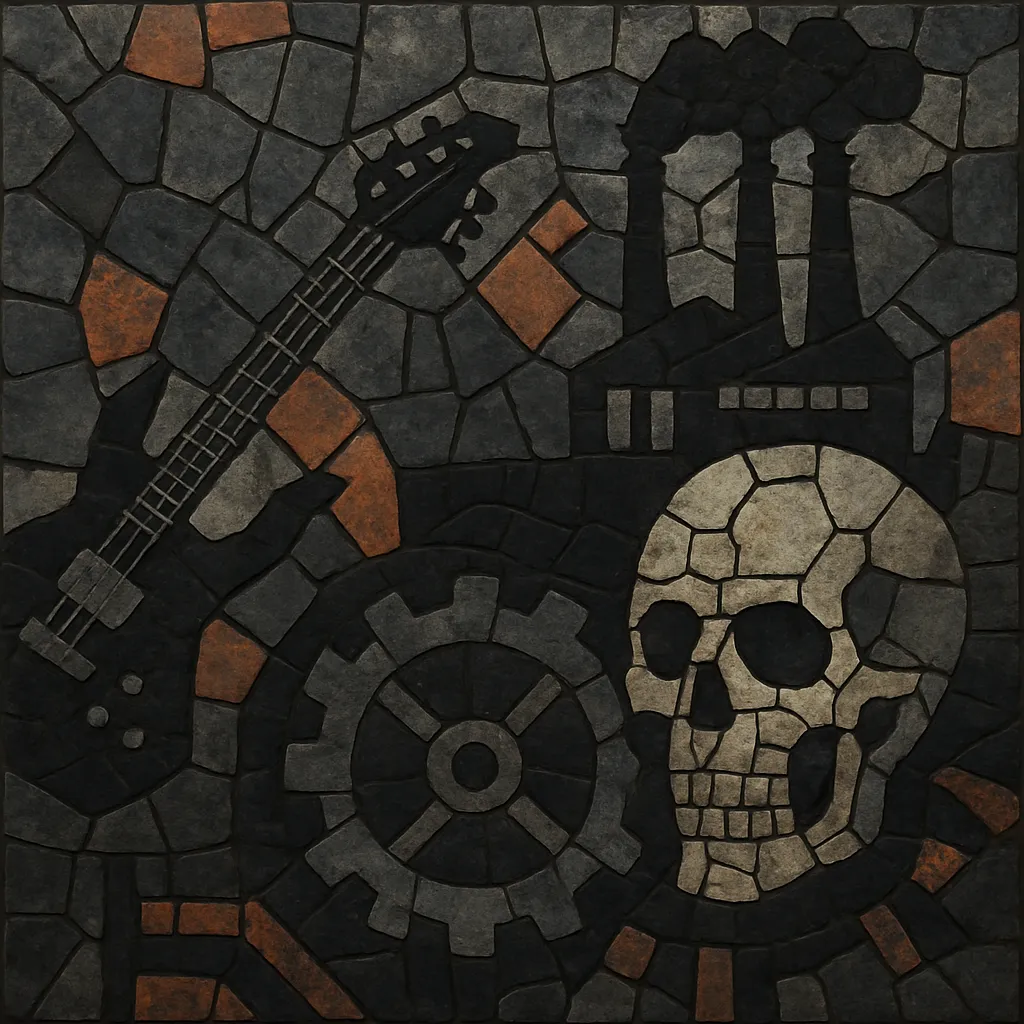Industrial rock fuses the abrasive sonics of industrial music with the riffs, song structures, and performance energy of rock.
Characterized by distorted guitars, pounding drum machines, sequenced bass lines, metallic samples, and heavily processed vocals, the style evokes a mechanized, dystopian atmosphere. Tempos often sit between 100–140 BPM, with rigid 4/4 grooves, syncopated patterns, and looped motifs that feel relentless and machine-driven.
Lyrically and aesthetically, industrial rock often explores themes of alienation, power, technology, politics, and transgression, drawing on post-punk’s nihilism and performance-art provocation while retaining rock’s hook-driven choruses.
Industrial rock emerged as artists from the UK post-punk and industrial scenes began grafting rock instrumentation onto the confrontational sound design of industrial music. Early influencers included groups like Throbbing Gristle and Cabaret Voltaire (industrial foundations) and post-punk outfits such as Killing Joke, which paired heavy, repetitive guitar figures with drum machines and synths. Noise practices, tape manipulation, and performance-art sensibilities framed the genre’s ethos.
By the mid-1980s, Chicago’s Wax Trax! Records helped incubate a harder, club-informed sound that drew from EBM and synth-based production while foregrounding guitars. Ministry shifted from synth-pop into a ferocious industrial rock/metal hybrid (e.g., The Land of Rape and Honey, 1988), while KMFDM blended militant beats, samples, and riff-centric songwriting. Nine Inch Nails’ Pretty Hate Machine (1989) and The Downward Spiral (1994) brought industrial rock to mainstream rock radio and MTV, establishing a template of hooky choruses wrapped in harsh textures. Soundtracks (The Crow, Natural Born Killers, Lost Highway) amplified its cultural footprint.
Acts like Marilyn Manson, Stabbing Westward, Filter, and Gravity Kills helped carry the style across alternative and hard rock channels. Production aesthetics—drum machines locked to distorted guitars, bitcrushed samples, and aggressive vocal processing—became widely emulated, influencing emerging alternative metal and nu metal.
Industrial rock splintered into heavier (industrial metal) and more electronic directions, while its production vocabulary seeped into pop, hip hop, and electronic scenes. Revival waves and crossovers with witch house, synthwave, and dark pop recontextualized its cold textures. Contemporary creators often combine DAW-based sampling, modular synths, and re-amped guitars, maintaining the genre’s core tension between mechanized precision and human volatility.


